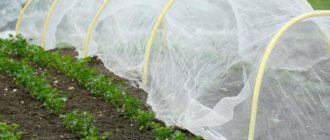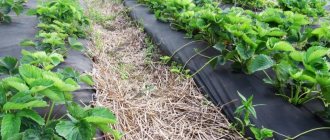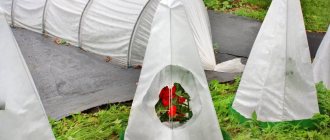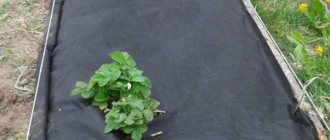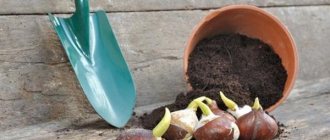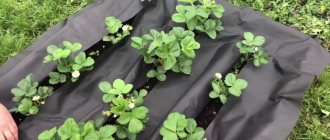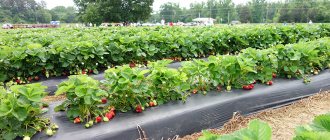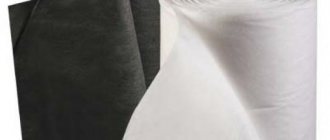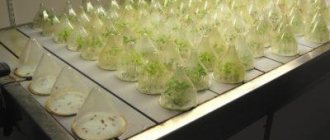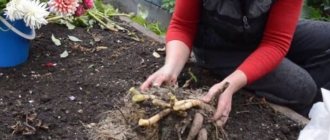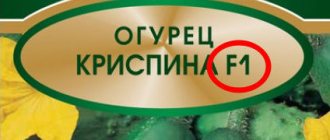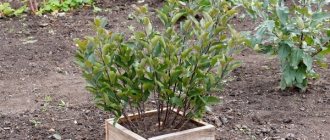Polypropylene material - agricultural use
To cover garden and vegetable crops, two types of materials are used: non-woven and polyethylene. Non-woven material (agrofibre) is more popular as it has many advantages over film. It does not harm the environment, is lightweight (it is used to cover beds without using support), breathable and water-permeable. But due to these features, it retains heat worse than polyethylene.
The main function of the polypropylene that makes up the agrofabric is protective. It protects plants from short-term spring frosts, wind, scorching summer sun, and prevents attacks by harmful insects. The fiber also creates a microclimate favorable for crops in the beds, preventing the rapid evaporation of moisture and drying out of the top layer of soil.
The fabric contains ultraviolet stabilizers (UVS), which protect the fabric from the damaging effects of sunlight. Thanks to this feature, the material is durable.
The material is used not only in the agricultural industry, but also for the production of disposable medical gowns, shoe covers, feminine hygiene products, baby diapers, as well as in construction and furniture production.
Using agrofabric to cover beds has a positive effect on the future harvest:
- productivity indicators increase significantly;
- covered fruits ripen earlier than uncovered ones;
- the growing season of many crops is extended, and hence fruiting.
Spunbond
Spunbond is a fairly inexpensive non-woven covering material that protects crops from ultraviolet rays, insects and precipitation, allowing the crop to “breathe.” This material is very light and does not put pressure on young shoots, it is not afraid of mold, and it does not have a negative effect on plants.
When using spunbond, ventilation is recommended to avoid waterlogging, since the fabric is capable of allowing water to pass through. It can be used for more than one season, but it must be disinfected annually.
Depending on the density of the material there are:
- white with a density of up to 30g/m2 - it is used for covering not only seedlings, but also for berry bushes, flowers, and ornamental shrubs;
- white with a density of 30-50 g/m2 - folded in several layers, suitable for covering any crops and greenhouses in winter;
- black with a density of 50 to 60 g/m2 - it contains ultraviolet stabilizers, which results in a dark color and increases service life.
Types and properties of agrotextiles
Nonwoven fabric comes in different types, depending on the density and color of the fiber.
| Type of material | Density g/sq. m | Color | Purpose |
| Easy | 17–30 | White | Used in spring and summer to protect plants planted in open ground from the scorching sun and insect pests. Helps plants tolerate low temperatures at night |
| Average | 42–60 | White | Used to create an arc greenhouse. Protects plants from short-term frosts down to -3 degrees, allows air to pass through well |
| Dense | 60–80 | White black | Black is used to mulch the soil; greenhouses are covered with white, tree trunks are tied, and heat-loving shrubs are covered for the winter. The textiles are durable, washable and reusable. It has the property of accumulating heat, maintaining a climate favorable for plants in the greenhouse at an air temperature of -6 and below. |
Trademarks that produce agrotextiles use the same technology to create them. But the quality and functionality of nonwoven material varies from manufacturer to manufacturer. The most popular are Agrospan, Lutrasil, Spunbond, Ultrasil. The material may have other colors (white-red, black-yellow). It can also be single-layer, double-layer, foil, reinforced. Each of these coatings performs a specific function.
Agrospan
The material is a synthetic fiber, similar in appearance to non-woven fabric. Agrospan is quite strong and has a long service life of 3 years. It comes in white and black, and can have a density level from 17 to 60 g/m2. m. It is used in agriculture to protect plants from freezing, overheating, hail, strong wind and rain. Thick textiles are used to insulate plants in winter; they can withstand up to 8 degrees below zero and do not tear under snow pressure.
Lutrasil
Non-woven covering Lutrasil is one of the most popular means for covering beds and greenhouses. This is a high quality material that is produced in Germany. Its advantages include good air exchange. Evaporating moisture under the coating does not condense and mold does not form on it. The lifespan of the material is at least 3 years.
Agrotextiles are produced in white (for covering), black (for mulching) and black and white. The fiber density is: 17, 23, 30, 60 g/sq. m.
Spunbond
This covering material is similar in characteristics to Lutrasil. It also retains heat well in a greenhouse or shelter, allows moisture and air to pass through, has antibactericidal properties, and protects the plant’s root system from cold and overheating. It is used not only for mulching and creating greenhouse structures, it is used to wrap tree trunks, protecting them from rodents. The service life of the coating is from 2 to 6 years (depending on density).
Selecting quality fiber
Leading agrotextile manufacturers perform the same functions. They are produced in the same way, using the same ingredients. A high-quality genuine product has virtually no differences in characteristics. But the great demand for non-woven covering materials has led to the emergence of many fakes that are difficult to identify by external signs.
Fake synthetic fiber does not contain SUF, which is why the textile becomes unusable by the second year of use. Experts advise choosing a product whose packaging contains special marks confirming the authenticity of the material. An important indicator of the quality of a product is the uniformity of its structure. There should be no gaps visible on the canvas.
Lutrasil
Lutrasil is a covering material for protecting plantings from adverse natural conditions and weeds, which is a fabric of interwoven threads.
Its advantage lies in its convenient use: it does not need to be dismantled when watering, it can be easily lifted and protects the crop from weeds and pests. Condensation does not form on the surface of lutrasil, so the material can last a long time, moreover, it is non-toxic and does not harm crops or humans.
Lutrasil is divided depending on density:
Recent Entries
Chainsaw or electric saw - what to choose for the garden? 4 mistakes when growing tomatoes in pots that almost all housewives make Secrets of growing seedlings from the Japanese, who are very sensitive to the soil
- light white - able to withstand temperatures down to -3 ° C and is used mainly for covering seedlings and first shoots;
- white medium and high density - used for winter covering (frost protection down to -6-7°C);
- black medium density and dense - good for weed control (mulching).
Application in growing various crops
Nonwoven materials of different densities are used for different types of crops grown:
- The first spring greens are covered with light material 17–30 g/sq.m. m;
- to cover early tomatoes, cucumbers and zucchini, a tunnel greenhouse is built using medium-density non-woven fabric;
- It is recommended to cover the soil in which strawberries will be planted with black agrofibre with a density of 42 g/m2. m - it will serve as mulch;
- For crops that grow all season in closed ground, dense reinforced fiber is used.
Experienced gardeners note that there is no significant difference between covering materials of the Spunbond, Lutrasil and Agrospan brands. All of them meet the quality standards of polypropylene covering materials.
Density of non-woven polypropylene fiber
- 17-30 g/ m² - a material with this density range would be just right for my purposes. It is able to protect plants in open ground from strong sun and short spring frosts at night, and due to good permeability of air, water, light and good thermal conductivity, it helps to organize a special microclimate for plants for the best growth and development. The advantage of this material is also protection from birds and insects. Shrubs, berries, vegetables, fruits and ornamental plants, mainly growing in open soil, are covered with material with a density of 17-30 g/m².
Lutrasil with a density of 17-30 g/m²
- 42-60 g/ m² is perfect if you plan to build a greenhouse with arcs and provide the plant with winter shelter.
Cover made of non-woven material with a density of 42-60 g/m²
- 60 g/ m² - a material of this density “for the lazy”; its benefits more than pay for its market value. When producing the material, some companies add a UV stabilizer, which extends the life of the canvas. And the addition of carbon black gives the non-woven material a black color. This color promotes greater absorption of sunlight, the plants receive more heat, but the weeds, being under such cover, “do not see” the sun and die. Black is most often used as mulch, white is stretched over frames to protect plants. The structure of the material is such that it perfectly allows moisture to pass through. Therefore, watering and applying liquid fertilizers will not be difficult.
Covering roses with lutrasil with a density of 60 g/m²
There are so many different offers on the market now that it’s hard not to lose your head. By and large, the essence of all brands of covering nonwoven materials is the same. The difference is in proprietary manufacturing technologies and, of course, in price and quality. The most popular on the Russian market, it seems to me, is still spunbond, the name of which has actually become a household name for covering materials, like diapers for diapers or copiers for photocopiers.
Non-woven covering materials
Advantages and disadvantages of non-woven agrofibers
Today there are many non-woven covering materials on the market under different names, but the most famous of them are the brands “Agrotex”, “Agrospan”, “Spunbond”, “Lutrasil” and “Agril”. What are the advantages of non-woven materials over polyethylene covering?
Nonwoven materials differ in density as follows:
- lightweight (14-17 g/m²), which are available only in white: they will protect your plants from spring frosts, the burning sun, insects and birds;
- medium (28-42 g/m²), also exclusively white. Such materials are intended for constructing greenhouses, greenhouses and protecting shrubs and crops from winter frosts;
- dense (60 g/m²), which can be either white or black and are used for the same purposes as medium-density materials. Black agrofabric is often used to mulch the soil: without receiving light, weeds cannot develop and die, and the crop protected by the agrofibre is planted in its slots.
However, even these wonderful materials cannot save gardeners and gardeners from all the work: in order for insects to pollinate cucumbers, strawberries or zucchini, agrofibre must be removed in the morning and pulled back onto the bed in the evening. In addition, the coating can be damaged by crows, cats or dogs.
Lutrasil
This material looks like a light spider web. Condensation does not form on its surface, so it can be kept on the beds for a very long time.
Spunbond
Spunbond is a white or black non-adhesive non-woven fabric that creates a special microclimate for plants: it retains heat, allows sunlight, air and water to pass through, but does not rot. Black spunbond is intended for mulching beds and controlling weeds, and the purpose of the white material depends on its density:
- spunbond SUF 17 is designed for frameless shelter of plants from pests, heat and dry air;
- SUF 30 is used to protect crops from temperature changes and at night. It is usually stretched over a frame;
- SUF 42 material protects greenhouse plantings from frosts down to -3 ºC;
- SUF 60 saves plants in greenhouses and greenhouses from frosts down to -6 ºC and below. Tree trunks and shrubs are wrapped with this material for the winter: it will not only warm them, but also protect them from rodents.
Agril
This easy-to-use, durable non-woven material has excellent permeability to moisture, air and sunlight, while dispersing it well. It does an excellent job of protecting plants from both heat and low temperatures. When mulched, agril protects the soil surface from compaction, protects it from erosion and promotes crop ripening at least a week ahead of schedule. On sale there is transparent agril with a density of 17 and 40 g/m² for constructing greenhouses and protecting plants from heat and cold, as well as black agril with a density of 50 g/m² for mulching vegetable and strawberry beds.
Under the mulching non-woven fabric, biological processes are not disturbed, so the soil does not need to be weeded or loosened.
